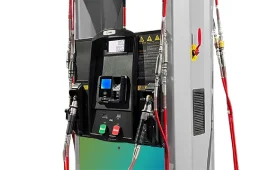In order to trade stocks, one must first understand the tools of the trade. One such tool is the Kagi chart. The Kagi chart is a Japanese candlestick chart that is used to track price changes in financial markets. Keep reading to learn about the benefits of Kagi charts and how to interpret them.
Tips for Interpreting and Using a Kagi Chart
Kagi charts are a type of technical analysis chart used to help investors interpret price patterns and trends in financial markets. The charts are composed of a series of vertical lines, typically with a green line representing bullish price movement and a red line representing bearish price movement. The lines connect the top and bottom points of each trading day, with the direction of the trend indicated by the color of the most recent line.
Kagi charts can be used to identify both short-term and long-term trends, as well as potential reversals. A number of traders use Kagi charts to help time their buy and sell decisions and to help assess overall market sentiment. Kagi charts are not as commonly used as some other types of technical analysis charts like bar graphs, but they can be helpful in certain situations.
How To Determine Trendlines on a Kagi Chart
In order to determine trendlines on a Kagi chart, you must first understand how to interpret the Kagi chart. Kagi charts are composed of vertical and horizontal lines that indicate price changes. The lines are connected by diagonal lines, which represent trendlines. In order to determine the trendlines on a Kagi chart, you must first find the peak and valley of the price action. Once you have found these points, connect them with a straight line. This will be your primary trendline.
You can then use this trendline to determine whether or not the security is in a bullish or bearish trend. If the security is trending higher, then the diagonal line will be pointing up, representing a bullish trend. Conversely, if the security is trending lower, then the diagonal line will be pointing down and representing a bearish trend.
Also read: Pacman 30th anniversary
Trading Strategies that can be Implemented with a Kagi Chart
A Kagi chart is similar to a bar graph, but the bars are not always uniform in length. The Kagi chart gets its name from the Japanese word for “bridge.”
The Kagi chart can be used to track stock prices, commodity prices, or any other type of financial instrument. The most important feature of the Kagi chart is that it uses time as its primary axis rather than price. This means that you can get an idea of how long a particular trend has been going on and how strong it is.
To interpret a Kagi chart, you need to first understand the basics of candlestick charts. Candlesticks are made up of a body and two wicks. The body is the part of the stick between the open and close prices, and the wicks are the lines extending from the body on either side. A black candle means that the close price was lower than the open price, while a white candle means that the close price was higher than the open price.
In general, you want to look for patterns in candlesticks in order to determine whether or not a security is bullish or bearish. For example, if you see several consecutive white candles followed by one black candle, this would be considered a bullish reversal pattern is known as an “inverted hammer.” Conversely, if you see several consecutive black candles followed by one white candle, this would be considered a bearish reversal pattern is known as a “shooting star.”
You can also use these patterns to help you trade binary options. For example, if you think that an investment will rise in value over time, you could buy a call option based on that security. Conversely, if you think that it will fall in value over time, you could buy put options based on that security instead.
AV Health Keto Trim stands out from the rest of the formulas because of its keto-backed functioning help you lose fat
Combining Kagi Charts with other Technical Indicators
Kagi charts are a type of technical analysis chart used to track the price of a security. They are similar to candlestick charts but use lines instead of bars to indicate the opening and closing prices. Kagi charts can be combined with other technical indicators to give users a complete picture of the market.
One common combination is pairing a Kagi chart with moving averages. A Kagi chart can be used to identify trend changes, and then a moving average can be used to determine the strength of that trend. The Kagi chart can also be used to find potential buying or selling points, and then the moving average can help confirm whether those points are valid entries or exits from the market.
In a nutshell, Kagi Charts are important because they are a visual representation of price movement and can be used to identify trend reversals and trend continuations. They can also be used to identify support and resistance levels and can be combined with other technical indicators.




